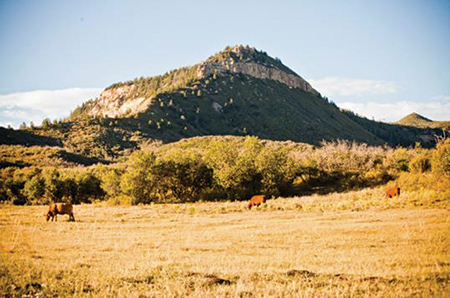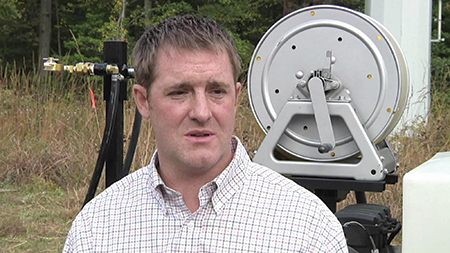Since the August 2003 blackout in the Northeast, electrical grid reliability has been under heavy scrutiny. Circumstances leading up to that massive power outage – as well as other modern-day blackouts in the United States – have been thoroughly examined. While many factors contributed to the power interruptions, severe weather has been cited as the single leading cause. And major weather events are becoming more common.
A report released in August 2013 by the Executive Office of the President of the United States estimated 679 widespread power outages due to extreme weather events occurred between 2003 and 2012.1 The report cites a heavy financial toll from those weather-related outages, with cost estimates ranging from an annual average of $18 billion to $33 billion. A recent Congressional Research Service study cited in the report estimated annual average weather-related outage costs at $25 billion to $70 billion. Cost variations were attributed to the assumptions and data used for calculations.
The report also cited data from the U.S. Energy Information Administration, which described a significant increase in weather-related outages since 1992. The National Climate Assessment foresees the incidence and severity of extreme weather continuing to escalate due to climate change. While the effects of these changing weather patterns are predicted to vary throughout the country, projections include more frequent heavy precipitation events, more extreme temperatures, increased hurricane intensity and stronger, more frequent winter storms.
Vegetation management along utility rights of way can play a key role in minimizing the effects of extreme weather events. As utility companies across the country work to prevent and mitigate storm damage and outages, they are employing innovative, efficient vegetation management programs to provide long-lasting solutions that protect electrical transmission and distribution lines from vegetation-related outages.
Drought, Winds Alter Work Patterns
Southwest Ground Control in Chandler, Arizona, handles vegetation control on utility substations and transmission line rights of way (ROW) throughout the state for Arizona Public Service. Company crews cover 12,000 miles (19,300 kilometers) of transmission line ROW and substations and provide landscape maintenance and other site services for utility buildings and power plants.
In 2008, Arizona Public Service undertook a massive ROW maintenance program to help increase transmission reliability and comply with Federal Energy Regulatory Commission (FERC) and North American Electric Reliability Corporation (NERC) standards. The project includes tall brush mowing followed by a sustainable herbicide maintenance program.
Timing Applications with Rain
“We move crews with the weather and plan applications for when we have a good chance of rain for herbicide incorporation,” says Ron Romero, owner, Southwest Ground Control. “We seem to be having a longer break between rains in recent years. And the rain we receive falls in larger doses than in the past. Rather than four quarter-inch (±7 millimeter) rains, we’ll get a single one-inch (±25 millimeter) rain.”
Extremely dry conditions in parts of Arizona have led to strict treatment mandates to prevent the spread of wildfires. These limitations greatly affect crew productivity and interrupt schedules.
“When the Forest Service issues red-flag fire warnings, tree-cutting and application crews can’t run any gas-powered machines after 9 a.m., and a crew member must stay on treated sites for three hours,” Romero notes. “When wind speeds reach 20 to 30 miles per hour (32 to 48 km/h), our crews are completely shut down, and we’re quickly behind schedule.”
Customized Solutions
To meet Arizona’s exacting standards for an environmentally favorable, sustainable program, Romero implemented a treatment program that features a preblended herbicide tank mixture delivered in a returnable, reusable container system. The containers include a bar code for easy tracking from the blending facility to the field.
“The herbicide mixture is specifically blended to match the brush being treated,” Romero says. “And the premix eliminates mixing errors in the field, helping our crews apply the same mixture consistently. Because we use an ultra-low volume, four operators can work at extremely remote sites for a week, using just one 250-gallon (±900 liter) tote carried in the back of a truck. This gives us greater efficiency.”
Environmental, Economic Benefits
While treating ROW that cross an Arizona Navajo reservation, Romero calculated impressive environmental benefits. The preblended, returnable/refillable system:
- Saved more than 4 million gallons (14.5 million liters) of water
- Reduced landfill additions by more than 10,000 2.5-gallon (9-liter) jugs, 1,500 pounds (680 kilograms) of cardboard and 550 pallets
- Reduced carbon footprint with less water and herbicide delivery
Beyond the environmental benefits, the herbicide program makes good sense economically, Romero said. “While mowers provide a valuable service, they’re extremely expensive,” he notes. “The contract for mowing rights of way over five years is $54 million. When compared to the $5 million cost for our herbicide program over five years, the savings quickly add up.”
Outstanding Results
The blend used in the Arizona program includes a base of DuPont™ Method® 240 SL and Escort® XP herbicides, Thinvert (an invert emulsion spray fluid), and other herbicides included as needed to control additional brush species.

In Arizona, an integrated vegetation management plan by Southwest Ground Control has converted brushy rights of way to native grasses where livestock can graze.
“The goal of the program is rangeland creation,” Romero explains. “For example, by first mowing a heavy stand of brush oak, mesquite or juniper and following up the next year with a selective herbicide treatment on regrowth, we allow native grasses to be released.
“Rights of way we treated three years ago look amazing. All sorts of wildlife are grazing in those areas, and cows are feeding on the new grasslands. The Navajo Nation is grazing sheep on land it couldn’t use before.
“I’m very proud of the work we’re doing here,” Romero adds.
Greater Line Reliability
Jason Myers, national accounts manager for CWC Chemical, Inc., has noticed an increase in turbulent weather across the country in recent years. However, he believes the biggest change in vegetation management for utility companies has been driven by the increased FERC/ NERC standards.
CWC Chemical, a herbicide distributor that focuses primarily on utility vegetation management, is headquartered in Cloverdale, Virginia. The company works with major utilities across the country. In the West, Myers assists utility companies that are part of PacifiCorp.
“Increased vegetation management standards have been a very positive thing for our industry,” Myers notes. “Utility companies now know what rights-of-way vegetation requirements are, and they have increased funding to get the job done. With greater clearances required along transmissions lines, utilities are reclaiming encroached areas along rights of way and trimming very aggressively to meet FERC standards.”

Jason Myers says FERC/NERC standards provide clear vegetation management goals that help transmission lines withstand stronger storms.
Premix Delivers Multiple Benefits
To help his utility customers get the best control along rights of way, Myers recommends a premix custom blend to handle targeted species. Depending on landholder requirements, his blend often includes Method® 240SL and Escort® XP herbicides. Krenite S brush control agent, Garlon or Rodeo herbicides may also be part of the mixture to control additional brush species.
“The types of treatment used depend on the size of brush being treated, whether it’s a transmission or distribution line, and right of way location,” Myers says. “We do reclamation treatments in rural areas, where we transition from brush to native grasses that won’t interfere with the line.
“In urban areas, where we’re working near people’s backyards, we need to carefully explain what we’re doing to help landowners understand the benefits. A big part of my job is helping applicators communicate with landowners as effectively as possible.”
Program Benefits
For utilities, Myers sees many of the same benefits from using preblended, returnable/refillable containers that Romero noted.
Hearing Highlights the Need for Proactive Vegetation Management on Federal Land
With the threat of electricity blackouts and catastrophic fires looming, congressional leaders recently convened an oversight hearing to address federal policies that are hampering efforts to keep the lights on. During a May 2014 meeting conducted by the House Committee on Natural Resources Industry, officials called for improved vegetation management and better communication with the electric utilities crossing federal land.
The need for proactive, consistent vegetative management policies on public lands was reiterated throughout the testimony. Utility representatives called for policy changes that would encourage federal land managers to work collaboratively with power companies to achieve those goals.
For more information on the hearing, see the press release “Federal Red-Tape and Inconsistent Decision Making Hampering Efforts to Keep the Lights On and Reduce Forest Fire Risk” at naturalresources. house.gov/news.
“With no measuring or mixing, applicators handle less product for consistent, accurate herbicide blends,” he says. “And by using 15-gallon (55-liter) refillable drums, thousands of 2.5-gallon (9-liter) jugs and their packaging materials are kept out of landfills.
“Our utility customers also appreciate the increased accountability about the products they’re using. For example, if a utility has hired an applicator to treat 15,000 acres, we can run a report that tracks exactly how much product was delivered for an accurate average volume per acre,” he explains. “This type of program creates an important checks-andbalances system for right of way managers.”
“With the current program, we now have improved access on more core transmission lines than in the past,” Myers adds. “With vegetation under control, lines are better able to withstand storms and turbulent weather for greater reliability.”
About the Author
 Dan Zapotok is the industrial vegetation management portfolio manager for DuPont Crop Protection, where he is responsible for products within the IVM, railroad and forestry markets. Zapotok has worked with DuPont for more than 20 years, holding positions in operations, project management and marketing. He earned a bachelor’s degree from Pennsylvania State University.
Dan Zapotok is the industrial vegetation management portfolio manager for DuPont Crop Protection, where he is responsible for products within the IVM, railroad and forestry markets. Zapotok has worked with DuPont for more than 20 years, holding positions in operations, project management and marketing. He earned a bachelor’s degree from Pennsylvania State University.
Always read and follow all label directions and precautions for use. Some products are not registered for sale or use in all states. Contact your local DuPont retailer or representative for availability in your state. Products containing aminocyclopyrachlor are for use in non-crop applications only and do not have a grazing tolerance. The DuPont Oval Logo, DuPont™, Escort® and Method® are trademarks or registered trademarks of DuPont or its affiliates. DuPont is the exclusive agent for sales of Krenite in the U.S. brush control market. Krenite is a registered trademark of Albaugh, Inc. Thinvert is a registered trademark of Waldrum Specialties, Inc. Garlon and Rodeo are registered trademarks of Dow AgroSciences.
Reference
1 Economic Benefits of Increasing Electric Grid Resilience to Weather Outages, August 2013.







